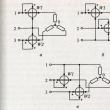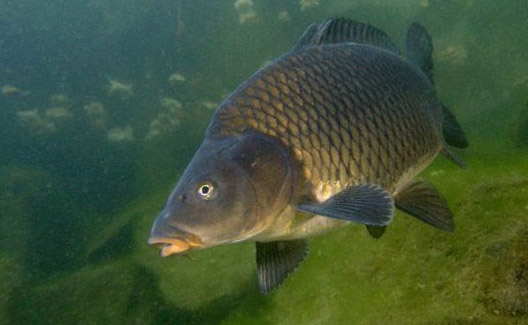Sections of the site
Editor's Choice:
- Business with China - where to start, how to find suppliers + TOP-15 goods from China and a list of trading platforms
- Where to invest 1000 dollars
- Three common misconceptions and six life tips
- How can maternity capital be used - what needs can be spent on maternity capital
- Caramel apples - a new idea for business
- Ready business plan for beginners
- Gypsum tiles for stone: 7 advantages of the material
- How to buy the best and interesting unusual goods from China for home, gifts and sales on Aliexpress in Russian?
- Business plan for opening a bath
- Where to spend maternity capital before the child is 3 years old
Advertising
| Topic of the week |
|
Over 70% of freshwater fish, which are artificially raised by humans, belong to the carp family. Unpretentious to the habitat, omnivorous, a source of tender meat containing many vitamins - this type of fish can be briefly described. The benefits of growing carp.One of the main advantages in breeding and growing carp is its simplicity: this heat-loving fish, however, tolerates winter well, hibernating, low oxygen levels and poor water flow. The carp does not go through food either: they get their food at all levels of the water layers of the reservoir - from the bottom to the surface, feasting on insect larvae, slugs, tadpoles, algae and plants and others. This type of fish is also characterized by rapid growth, and an already one-year-old individual can reach a mass of 1 kg. Females are characterized by high fertility, depending on their age and water temperature of the reservoir, she can sweep up to 1.5 million. eggs. Last but not least, carp meat is tender, contains vitamins B, PP, C and E. Breeding carp in the pond.For carp breeding, a pond of shallow depth is chosen - 1.5-2m, this is due to the fact that carp prefers warm water, and at such a depth it will be optimally warmed up. When placed near the pond, night illumination can provide it with additional nutrition - the light attracts insects. When growing carp in cages, you can install cultivators on them for growing fly larvae. The pond should be able to renew the water at least partially, there should be additional aeration. A larger pond is preferable, since it has a more even temperature regime, but there is an opinion in favor of smaller ponds, since in them carp spends less time getting food, and therefore grows faster. For the production of 10 tons of carp, a pond with an area of 5 hectares is enough; when the reservoir is stocked with fingerlings, it is produced with a density of 200 individuals per 1 sq. pond. When raising fish in cages, you need to make them. The cage is a free hanging "bags" made of nylon net with a cell of 6.5 or 10 mm, which are attached to a floating plank frame. The thickness of this frame is 30-40mm, it is fastened with metal squares with floats attached to them. With this method of growing fish, do not forget about the additional supply of air. Some farms also raise carp in pools made from a wide variety of materials. Such pools must be sealed to retain water, with air aeration, fresh water pumping, and a drain for impurities. This option is more costly, however, it allows not only to grow marketable fish, but also to maintain producers for the subsequent selection of eggs, rearing larvae, and growing underyearlings.
Spawning carp.Most often, when deciding to raise carp, young of the year are chosen for this purpose, with which they stock the pond, but sometimes fry are purchased for this. Carp becomes sexually mature at the age of 2-5 years, and this process develops faster if the water temperature in the pond is higher. Carp spawns most often in coastal vegetation, on which eggs are glued. For 3-6 days, an embryo develops in the egg, and already on the second day after hatching, the fry begins to actively feed on zooplankton. Young carp are released into the pond in May-June. The density is calculated as follows: if it is grown in monoculture, then the pond is stocked at the rate of 40 thousand fry weighing 25-30 g per 1 hectare of pond, if in polyculture - 25-30 thousand. At the same time, fish productivity is 8 c / ha. Breeding systems. Breeding systems for carp depend on the way they are fed: - extensive - assumes that the fish will eat exclusively natural food, that is, zooplankton, bottom fauna, etc. In this case, the cost of growing carp will be the lowest, the fish will be what is called "environmentally friendly", but the growth of individuals will be insignificant. -semi-intensive - carp eat natural feed, and their energy needs are satisfied by feeding carbohydrate supplements to feed. In this case, the productivity will be higher, approximately 700-1400 kg / ha, however, such nutrition does not fully satisfy the carp's need for proteins. - intense- implies feeding carp with compound feeds with a high protein content, which allows achieving a productivity of 3-20 tons / ha. This system is the most expensive, although it provides the highest performance. At the same time, the pond must be provided with additional aeration and water flow in order to prevent pollution of the reservoir and the development of fish diseases. Interesting about carp. Back in 1000 BC. carp began to be eaten in Asia. The first experience of growing carp was described in a Czech book - in the 14th century it already described methods of equipping special ponds for growing domestic carp, and in the 15th century it began to be grown in France. It was there in the 18th century that the largest carp among the known cases was caught - weighing 69.8 kg, and in the same era the most "adult" carp was caught - a 40-year-old individual, 108 cm long. Despite the fact that in many countries carp is a very valuable fish and is even elevated to a cult; in Australia, they not only do not eat it, but actively fight it, considering it a malicious pest of the ecosystem. Since the end of the 19th century, in the United States, they began to simultaneously grow carp for food and popularize paid carp fishing in order to get additional income from the organization of paid fishing, the manufacture of specialized tackle for catching this fish. The physiology of the carp is also interesting: its lips, folded into a tube, allow it to suck out larvae and worms from the silt, and its teeth are located in the pharyngeal cavity in 2 rows (five each). Carp does not like noise and tries to avoid noisy places, can jump up to almost 1 meter. Cyprinids live in schools, which usually consist of several dozen fish of approximately the same age and size, sometimes the schools disintegrate, and their representatives leave for new ones or keep on their own, especially trophy individuals. When the water temperature drops to 8-10 ° C, the carp stops feeding intensively and begins to search for places suitable for wintering. |
| Read: |
|---|
Popular:
Power and energy measurement
|
New
- Where to spend maternity capital before the child is 3 years old
- What business can you do at home
- How to open a sauna (bathhouse): business plan and recommendations
- Private bath and sauna as a business idea
- Natural stone business
- Fusing glass at home
- Power and energy measurement
- How to get promoted to a novice beauty master
- Breeding of laying hens for eggs: business plan and profitability
- Creative business ideas that make a profit






